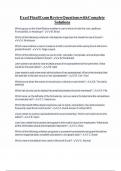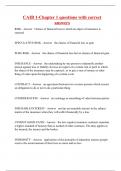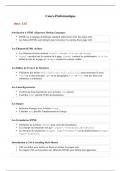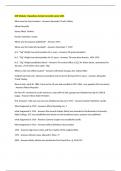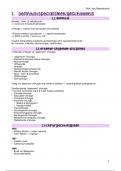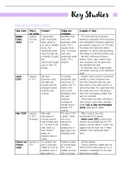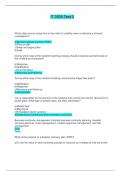1. GSR
2. DRUGS/WHITE POWDER
3. INK
4. BULLETS COMPARISON
5. BLOOD
6. FINGERPRINTS
FORENSIC EXAMINATION RECORD
Item: GSR Affidavit Number.
Packaging: PAPER BAG
How the test works
This GSR test is a presumptive test - this means that we can use it as a quick and inexpensive way of
giving us a stronger indication of whether the chemicals found in gunpowder (such as cellulose nitrate) are
present before the evidence is sent off for deeper analysis. This test is easy to perform on the field
meaning that it can be used at crime scenes.
The test indicates that the person or people have recently fired a firearm, were in close proximity to it
when it was fired, or came into direct contact with the person who fired it (fewer particles will be detected if
this is the case) depending on whether the chemicals present in GSR have been detected.
On a gun, there is a primer at the base of the cartridge which the firing pin strikes when the trigger is
pulled. This sparks a chemical reaction inside the cartridge that ignites the gunpowder and propels the
bullet out of the barrel of the gun. The smoke and gas that leaves the barrel of the gun with the bullet is
known as the GSR - it usually contains particles of unburned gunpowder, tiny bits of metal, and chemicals
found in the primer (most commonly lead, antimony and barium). The GSR test detects the presence and
quantity of these chemicals. (Unc.edu, 2012)
Method
1. Place a cotton swab on the bottom of a petri dish.
2. Place a couple of drops of propan-2-ol to each end of the swab.
3. Gently swab (roll don’t rub) both ends of the swab across the sample.
4. Place the swab carefully back into the petri dish.
5. Place one drop of sodium rhodizonate on one end of the swab. Observe & record observations.
6. Place one drop of the diphenylamine reagent on the other end of the swab. Observe & record
observations.
A deep red colour with sodium rhodizonate indicates the presence of barium/lead.
A blue colour indicates the presence of nitrates.
Health and safety
- Gloves must be worn; sodium rhodizonate is an irritant
- Goggles must be worn as diphenylamine reagent can irritate the eyes either through contact or
through its fumes
- Test must be carried out in a fume cupboard as diphenylamine reagent can be harmful if breathed
in for a lengthy period of time.
Results
Neither end of the swab displayed a colour that indicated that either nitrates or barium/lead were present.
One end displayed a light orange colour, whilst the other end was black with a purple hue. It could be
argued that this was infact a blue not purple which would make it indicative of nitrates, however for my
results I have decided that the colour was purple.
Images
,Conclusion
As neither end of the swab was coloured deep red or blue, it determines that no nitrates or lead were
present on the piece of cloth that we swabbed for GSR. However, GSR may have been present in other
areas of the crime scene or other places on the victim’s body. It is unlikely that there were any errors in the
method, although some possibilities for error may have been that too much or too little propan-2-ol and
sodium rhodizonate were used, or that the swab was rolled or rubbed too aggressively on the piece of
cloth, destroying the GSR sample and resulting in an inconclusive test. We can only conclude from these
results that there was no GSR present on this specific piece of cloth, and that it may be unlikely that it is
present in the immediate surrounding area that it was taken from. Our results would be more reliable if we
were able to test multiple swabs from the crime scene, as it may have been that the amount of residue on
the area that we sampled was just too low for it to be registered through this test.
Advantages
- Helps us determine where the firearm was used (wherever the highest amount of residue is)
- Inexpensive and accessible to forensic analysts and field workers
- Transportable and easy to use on the field
- Only a swab is taken from entire section; leaves plenty of other GSR to be tested
Disadvantages
- GSR can be removed for example such as by washing hands or wiping it off, which the test does
not tell us
- Tests can produce false positives or negatives; fused particles found in primer mixture can be
produced from fireworks or brake pads (reduces validity)
- Doesn’t identify the firearm that was used
- Colour results can be subjective; people may interpret the results differently (reduces validity)
, Improvements and other tests
- More samples could be taken from the crime scene to be tested for GSR rather than one, as it
would give us a more accurate depiction of not only whether it was present at the crime scene, but
where the strongest and most traces of it are which can tell us roughly where the firearm may have
been used. More samples and tests conducted means that the results gathered will be more
reliable.
- Other chemical tests that may be used to determine the presence of GSR are the walker, greiss,
marshall, and tewari tests. These all indicate the presence of nitrates therefore may be more vague
than the sodium rhidozonate test which indicates lead, which would therefore make it the most
efficient way of testing for GSR on the field. (www.slideshare.net, n.d.)
- Flameless Atomic Absorption Spectrometry can detect elements of GSR even in nanograms by
using an atomiser and specifies the quantity of metal in GSR. It’s fairly inexpensive and provides
quick results. (forensicfield.blog, 2021)
- Scanning Electron Microscopy is non-destructive to the GSR samples and provides us with specific
shapes of lead particles. (forensicfield.blog, 2021)
Date Signed
09/05/2023
FORENSIC EXAMINATION RECORD
Item: DRUGS/WHITE POWDER Affidavit Number.
Packaging: PAPER BAG
How the test works
The Marquis reagent is composed of a mixture of formaldehyde and concentrated sulfuric acid; sulfuric
acid is very reactive, and mixed with formaldehyde causes a reaction that causes two molecules in the
substance to combine. The reaction of the Marquis reagent with the drug creates unsaturated double
bonds, which give off a colour when illuminated by light. Many natural drugs are alkaloids and all alkaloids
contain a nitrogen atom, which is what the Marquis reagent reacts with; some examples of these are


